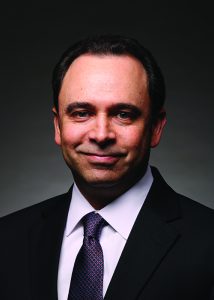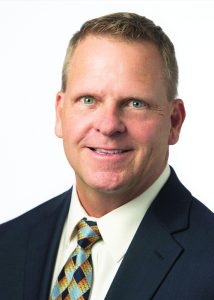A competitive market calls for
enhanced expertise
By Joseph S. Harrington, CPCU
The market for professional liability insurance operates under the premise that the specialists being insured have a thorough understanding of the risks they are taking on and are prepared to work with their agents and brokers to negotiate effectively for coverage.
That premise will be tested in the coming months as agents, brokers, insureds, and carriers deal with a hardening market under stress from increases in claim costs that affect virtually all professions. Stress is not distress, however. Professionals who take a flexible approach to risk retention and transfer will generally find capacity to be adequate and price hikes to be moderate.
“In general, the market for professional liability insurance is growing steadily,” says Anthony Dolce, head of professional liability and cyber for The Hartford. Capacity remains consistent for miscellaneous professional liability accounts, he notes, but it is tightening somewhat for accountants and for architects and engineers.

.
“[The Hartford] continues to see a demand for cyber coverage as part of a professional liability product. This can be as a blended approach … or as a stand-alone cyber policy packaged with the professional liability policy.”
—Anthony Dolce
Head, Professional Liability and Cyber
The Hartford
“Carriers are reluctant to deploy higher limits for accountants due to recent events impacting the accounting industry,” he says, citing the volatile cryptocurrency market, recent bank failures, and implementation of the Corporate Transparency Act (CTA). (Designed to combat fraudulent and illegal misuse of business entities, the CTA requires businesses operating in the United States to report detailed information on individuals who are “beneficial owners” of them.)
A similar tightening of limits for architects and engineers is driving design firms to seek more and larger excess policies, Dolce adds. Among other things, he finds that the growth of profit-driven private equity investors in this class creates uncertainty regarding the implementation of risk management and loss control.
For medical professional liability insurance, the market for single physicians and small group practices is “very competitive,” according to Shep Tapasak, chief underwriting officer for Medical Professional Liability at ProAssurance. “Responsive underwriting, claims, and risk management services are important for success,” he says.
As for hospitals and other large accounts, there is also “ample competition,” Tapasak says, but they are seeing larger rate increases than smaller providers. “Larger accounts with adverse claims development often see rate increases in the 10% to 15% range,” he says. “There may also be increased retentions, decreased limits, and other changes to terms and conditions.”

“Larger accounts with adverse claims development often see rate increases in the 10% to 15% range. There may also be increased retentions, decreased limits, and other changes to terms and conditions.”
—Shep Tapasak
Chief Underwriting Officer, Medical Professional Liability
ProAssurance
In all “the market for professional liability insurance is competitive,” says Manny Cho, executive lines practice leader for Risk Placement Services (RPS). “Carriers and MGAs are creating more medical and technology errors and omissions programs and expanding into allied medical lines of business.”
Professional liability carriers are driven by a need to “expand premium and write more profitable classes,” Cho says, adding that much of this business will be channeled into auto-renewal operations to boost carrier retention levels.
Claims experience
According to Cho, professional liability insurance has been buffered from the worst effects of “social inflation” that have driven up jury verdicts and liability losses in other lines.
“Social inflation has not had as big an impact on professional liability matters, as the claims relate to contract disputes and failure to perform,” Cho says. “Most claim disputes are settled prior to trial.”
That’s not always the case, however, according to Dolce. “Social inflation impacts all lines of professional liability insurance,” he says. “Higher plaintiff demands continue to drive up settlement values and verdicts across all segments.”
Liability claims inflation has had a particularly acute impact on medical professional liability (MPL) insurance, says Tapasak. To turn a phrase, Tapasak says that MPL has experienced an “increased frequency of severity.”
“This trend impacts all aspects of healthcare,” he says. “We’re not just seeing this with our own insureds. We also see it in new business submissions.”
Tapasak sees little sign that the latest increases in claim severity are significantly changing medical practices, but there are indications that care providers are pulling back from some services. For example, “we have seen reports of hospitals deciding that they can no longer provide labor and delivery services due to the increase in associated costs, including medical malpractice coverage,” he says.
More generally, Tapasak believes the litigation environment contributes to healthcare provider burnout.
Given the acute claims experience in the line, ProAssurance relies heavily on agents and brokers who specialize in medical professional liability. “We know they’re concerned about trends in severity and would like to see insurance costs stabilize,” says Tapasak. “Many of them seek to work with carriers that can provide sustainable programs, instead of having to shop every year for the lowest price.”
Cyber not silenced
In recent years, there has been a desire among many primary carriers and reinsurers to remove “silent cyber” coverage from professional liability policies and consign all coverage for cyber losses to dedicated cyber insurance policies.
The results have been mixed, as it is not always possible to separate liability for professional conduct from the technology used to perform professional work.
“Carriers have done a good job adding exclusions to policies to move cyber coverage from one line to another,” says Cho. “There is still potential overlap for accounts that save or store information of their clients. If this information is breached and the insured is sued for failing to secure the information, is that a professional liability claim or a cyber claim, or both?”
The Hartford “continues to see a demand for cyber coverage as part of a professional liability product,” says Dolce. “This can be as a blended approach, combining E&O and cyber coverage in one policy form, or as a stand-alone cyber policy packaged with the professional liability policy.”
Most important, Dolce says, carriers are explicitly addressing cyber exposures in policy forms. “This type of coverage is not left to chance,” he says. “Generally, established carriers will specifically enumerate where the policy provides cyber coverage and where it does not, so insureds know what they are purchasing in their professional liability policies.”
Cyber exposure is no longer an “emerging” risk, says Tapasak, but its status as a professional liability exposure remains unclear.
“So far,” he says, “I have heard of only one cyber event that was allege to result in an MPL claim.” But the rapid integration of technology into patient care raises concerns about the potential effects of cyber events on patient health. It’s not just a matter of HIPAA violations. “We will monitor this closely and continue to work with our cyber partner to assess any new trends,” he says.

“Social inflation has not had as big an impact on professional liability matters, as the claims relate to contract disputes
and failure to perform. Most claim disputes are settled prior to trial.”
—Manny Cho
Executive Lines Practice Leader
Risk Placement Services
Producer challenges
For now, the principal challenge facing professional liability agents and brokers is the same challenge cited repeatedly by producers in other specialty lines: the need to line up more carriers to provide the combined limits previously provided by one or two insurers.
“As insurance carriers reduce the limits they are deploying, agents and brokers are expending more time and effort to bring in additional carriers to build a tower with the right amount of coverage for their clients’ exposures,” says Dolce.
Agents and brokers have a challenging job in any market cycle, but it’s even more difficult when conditions indicate a hard market,” says Tapasak. “Producers that specialize in healthcare will have greater success working with underwriters to maintain stable insurance programs. Agents well-versed in healthcare will have strong experience with traditional risk transfer and with alternative risk transfer as well.”
Without a doubt, working with a growing range of carriers challenges agents to be vigilant safeguards of their clients’ interests.
“With so many carriers in the market, it’s important to understand the nuances of policy forms and what is and is not covered,” says Cho. “Price should never be the sole determining factor in a buying decision.
“The experience of the underwriters, the quality of claims service, the breadth of professional services covered, a carrier’s ability to grow with the account, and consistency in terms and conditions are all factors to consider when making a placement,” he says.
For more information:
The Hartford
thehartford.com
ProAssurance
proassurancegroup.com
Risk Placement Services
rpsins.com
The author
Joseph S. Harrington, CPCU, is an independent business writer specializing in property and casualty insurance coverages and operations. For 21 years, Joe was the communications director for the American Association of Insurance Services (AAIS), a P-C advisory organization. Prior to that, Joe worked in journalism and as a reporter and editor in financial services






